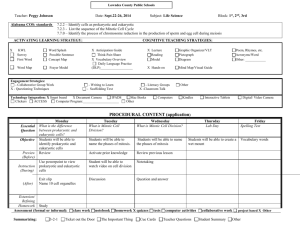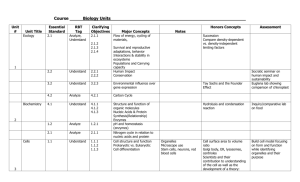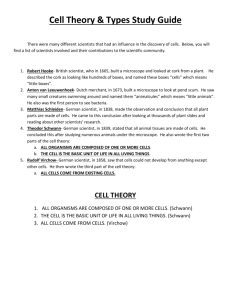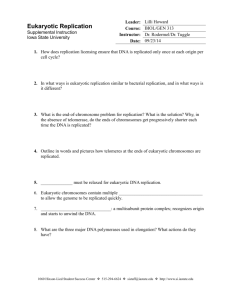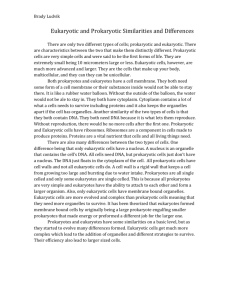Prokaryotic and Eukaryotic Cell Division
advertisement
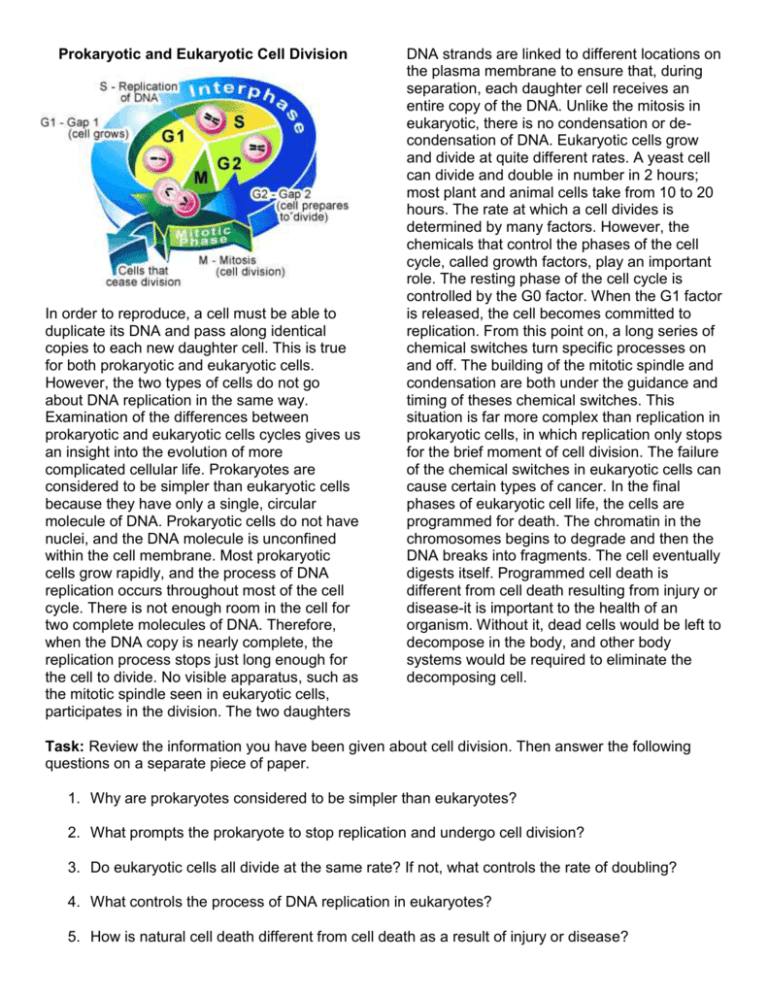
Prokaryotic and Eukaryotic Cell Division In order to reproduce, a cell must be able to duplicate its DNA and pass along identical copies to each new daughter cell. This is true for both prokaryotic and eukaryotic cells. However, the two types of cells do not go about DNA replication in the same way. Examination of the differences between prokaryotic and eukaryotic cells cycles gives us an insight into the evolution of more complicated cellular life. Prokaryotes are considered to be simpler than eukaryotic cells because they have only a single, circular molecule of DNA. Prokaryotic cells do not have nuclei, and the DNA molecule is unconfined within the cell membrane. Most prokaryotic cells grow rapidly, and the process of DNA replication occurs throughout most of the cell cycle. There is not enough room in the cell for two complete molecules of DNA. Therefore, when the DNA copy is nearly complete, the replication process stops just long enough for the cell to divide. No visible apparatus, such as the mitotic spindle seen in eukaryotic cells, participates in the division. The two daughters DNA strands are linked to different locations on the plasma membrane to ensure that, during separation, each daughter cell receives an entire copy of the DNA. Unlike the mitosis in eukaryotic, there is no condensation or decondensation of DNA. Eukaryotic cells grow and divide at quite different rates. A yeast cell can divide and double in number in 2 hours; most plant and animal cells take from 10 to 20 hours. The rate at which a cell divides is determined by many factors. However, the chemicals that control the phases of the cell cycle, called growth factors, play an important role. The resting phase of the cell cycle is controlled by the G0 factor. When the G1 factor is released, the cell becomes committed to replication. From this point on, a long series of chemical switches turn specific processes on and off. The building of the mitotic spindle and condensation are both under the guidance and timing of theses chemical switches. This situation is far more complex than replication in prokaryotic cells, in which replication only stops for the brief moment of cell division. The failure of the chemical switches in eukaryotic cells can cause certain types of cancer. In the final phases of eukaryotic cell life, the cells are programmed for death. The chromatin in the chromosomes begins to degrade and then the DNA breaks into fragments. The cell eventually digests itself. Programmed cell death is different from cell death resulting from injury or disease-it is important to the health of an organism. Without it, dead cells would be left to decompose in the body, and other body systems would be required to eliminate the decomposing cell. Task: Review the information you have been given about cell division. Then answer the following questions on a separate piece of paper. 1. Why are prokaryotes considered to be simpler than eukaryotes? 2. What prompts the prokaryote to stop replication and undergo cell division? 3. Do eukaryotic cells all divide at the same rate? If not, what controls the rate of doubling? 4. What controls the process of DNA replication in eukaryotes? 5. How is natural cell death different from cell death as a result of injury or disease?

